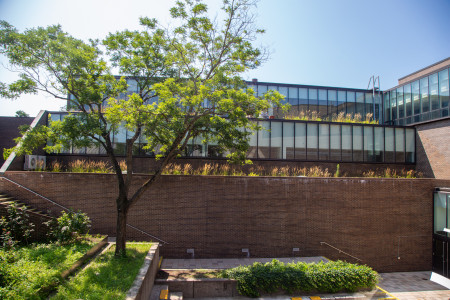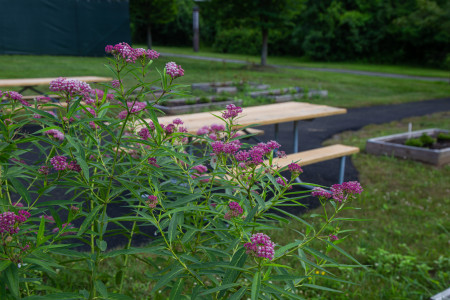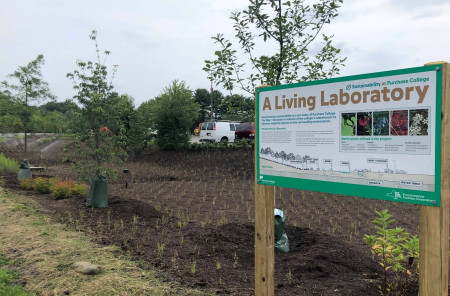Green Infrastructure
Environmental stewardship and restoration are key aspects to the sustainability culture at Purchase.
To maintain the “city within a country” design, Purchase pays great attention to the way we take care of our College-owned land. Our students remove invasive species, inventory tree species, maintain the Native Plant Garden and beehives, measure water quality in Blind Brook and utilize many parts of campus as a living laboratory for curriculum. Students also research and implement ideas to conserve water on campus, manage stormwater and runoff and identify environmentally-sensitive locations on campus.
See below a few examples of green land use at Purchase that help further our mission for a more sustainable future.
Green Roofing

The Visual Arts building houses a green roof that proves to have many benefits, to occupants and the natural environment. The roof is helpful with energy efficiency, stormwater management, beautification, improved air quality, and even noise reduction. The rooftop utilizes native grasses and other native species.
Native Plant Garden

The Native Plant Garden, established May 2019, was the result of a year-long collaborative project between students, faculty and staff. The Garden, formally the Student Garden, is located behind the Dance Building and is maintained by a coalition of the campus members as well the Environmental Studies Department to provide important community building and service. The selected native plants are important to pollinators and native species as a habitat and food resource. The space is designed to be used by the entire campus community and for accessibility with paved pathways and picnic tables.
Bioswales

The college has multiple bioswales on campus. They will absorb and naturally filter more than 26,500 cubic feet of surface runoff by utilizing engineered soils and all-native vegetation to capture, treat, and filter rain water. The system will improve local and regional water quality by decreasing the water volume and reducing pollutants such as phosphorus, nitrogen, sediments, metals and pathogens from reaching Blind Brook and ultimately the Long Island Sound. These projects provide research and test sites for students and the general public interested in environmental sustainability.